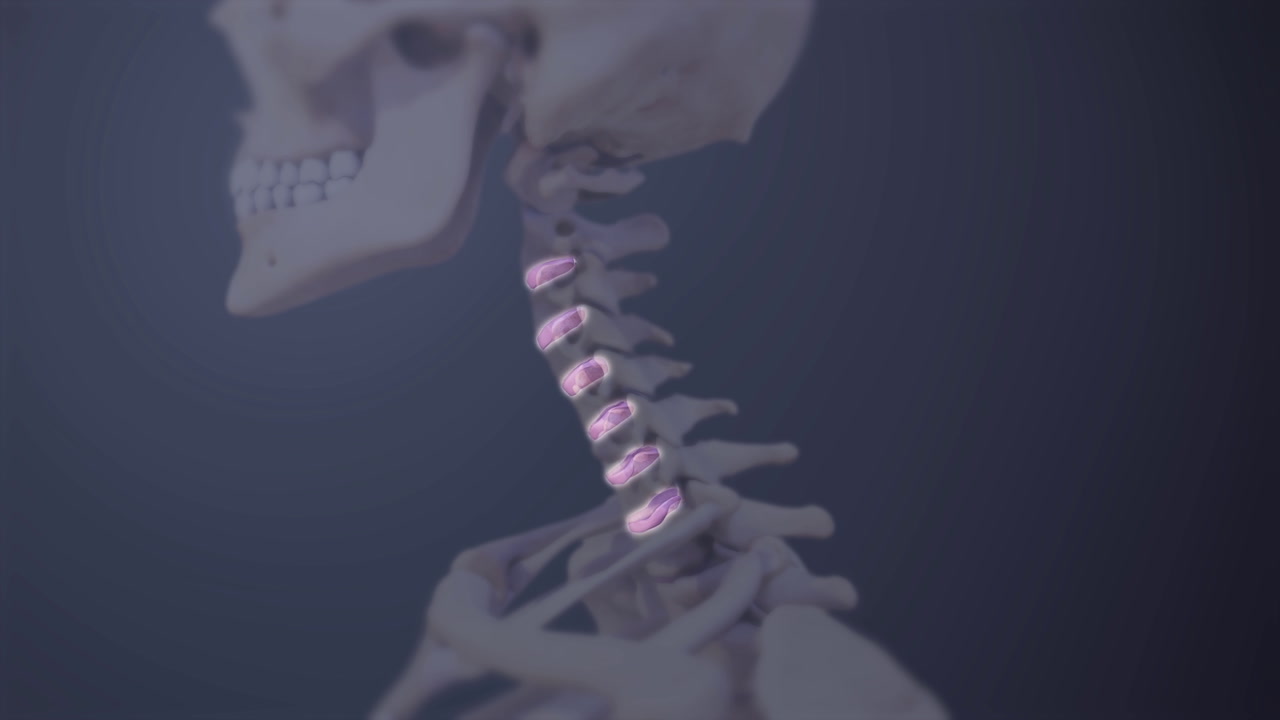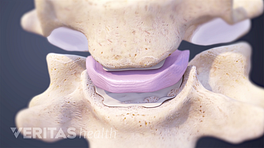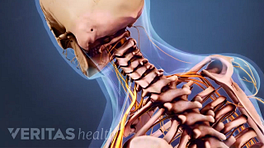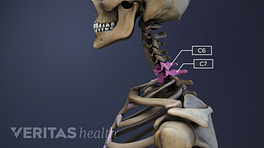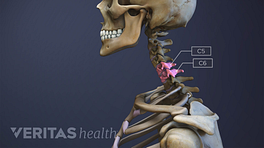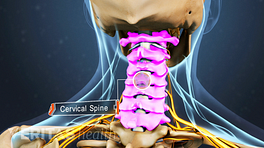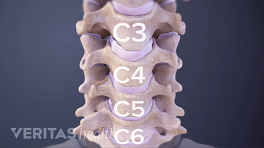There are 6 intervertebral discs in the cervical spine. These cervical discs are located between the adjacent vertebrae. They enable the highly mobile cervical spine to move in all directions while supporting the neck and head above.
Each disc is made of a tough outer ring called the annulus fibrosus, which encapsulates a gel-like interior called the nucleus pulposus. The annulus fibrosus is composed of fibrocartilage that can distribute heavy loads placed on the disc. The nucleus pulposus is composed of a loose network of collagen fibers suspended in a mucoprotein gel, which gives the disc more cushioning and flexibility.
Cervical discs lose water with age, becoming flatter and less flexible. These degenerative changes can potentially lead to pain, such as if a disc herniates and leaks inflammatory proteins onto a nearby spinal nerve.
A vertebral endplate is the transition region between the disc and the vertebra. It has a thin layer of cartilage attached to porous bone. The endplate allows for nutrients to pass into the disc. If an endplate becomes damaged or dysfunctional, fewer nutrients reach the disc, which may accelerate disc degeneration.
